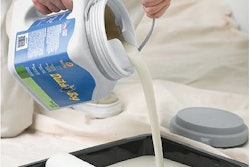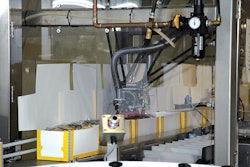The old role of packaging was focused on delivering cost reductions and synergy savings in order to pump the “saved dollars” back into advertising to gain more sales. But this tactic has changed.
Increasingly, consumer product companies understand the power of packaging as the “silent salesman,” and they’re pumping more dollars into packaging that were formerly earmarked for other advertising promotions. Brand managers are optimizing the use of packaging with aesthetics, graphics, functionality, and user benefits.
Consider this recent remark from Larry Light, Global Chief Marketing Officer at McDonald’s: “We are seeing the death of the broadcast-centric ad model. Mass marketing today is a mass mistake.”
Where McDonald’s once spent two-thirds of its ad budget on network prime time television, today it spends less than one-third. Packaging is one area of marketing where some leading companies have increased spending.
How do you leverage packaging as a marketing tool? Here are seven keys to delivering winning marketing solutions with packaging.
1. Bring packaging into the process earlier to deliver real value. While packaging professionals traditionally were brought into the final phases of product development, it is critical that packaging structure and design be integral to the development of the product. The manner in which a package’s structure enables consumers to fit a product into their lives is critical to product use and, ultimately, to a product’s success.
2. Make packaging a growth platform for marketing and the success of the organization. As ‘mass media’ becomes more fragmented, and advertising efficiency declines, consider investing in making your product and package integrate into consumers’ lives better. This will enhance performance, usage, and consumer loyalty. It will also encourage ‘word-of-mouth’ advertising, the most cost-efficient advertising possible.
3.Look at packaging as a brand lever and brand ambassador. Building on this idea of having consumers serve as ‘brand ambassadors,’ recognize that this must be carefully and purposefully integrated into your research and development strategy. How can the package fit so well into consumers’ lifestyles that they leave the product out on their desks at work, or on the counter in the kitchen, or carry it with them in their pockets or attaches? When friends, family and colleagues view a trusted friend using your product, you have gained a valuable endorsement.
4. Link trends with packaging to deliver consumer delight. A key trend among Americans is that we are increasingly ‘eating in the car.’ Observe newer packaging across fast-food, confectionery, salty snacks, and other categories, and it’s clear that the right packaging offers opportunities in other products, too. Consumer products manufacturers are successfully offering packaging options that provide are a natural fit for “in-the-car” consumption. By leveraging key consumer trends through packaging, your product can be a leader and capture growing usage occasions, fitting better into consumers’ lives.
5. Build functionality and benefits into the product with packaging. Consumers will spend up to six times more per serving for food if it comes in an easy-to-use package. Quaker Oatmeal’s Instant Express, for example, sells for $1.29 per serving, compared with 42¢ for Quaker Single-Serve and 21¢ for a serving of oatmeal from the traditional Quaker canister. Campbell’s Soup at Hand retails for $1.69 vs. a similar-size serving in a traditional metal can at 69¢. Packaging can be a critical driver of benefits and value. When competition is stiff and the economy makes growth difficult, why not leverage packaging to grow both the top line and the bottom line?
6. Develop a consumer insights/metrics program to understand and monitor the value of packaging features and benefits. The value of packaging has not been well documented or quantified. As business professionals, our job is to drive revenue and profitability, and packaging can play a vital role, but this value should be measured. When adding items to your product line, assess the net benefits that the product brings to your business. Relevant consumer and retailer benefits, sales, margins, total operational performance, and increased distribution are examples of metrics. Once packaging is recognized as a key lever for growth, it may be a better return on investment than other marketing and promotional strategies. In most cases, it is easier to measure.
7. Develop memorable packaging, consistent with brand equity, communication objectives and consumer expectations of the product. If your packaging is dated or is non-distinctive in your category, it is probably not building your brand equity significantly. The household product category, traditionally deemed “non-emotional,” is seeing change with repackaged products such as tissues and dish soap. If your product is so attractive that it justifies being left on the counter, or if it even creates an interesting design statement—such as colored cases for Macintosh computers, or Method dish soap products—you can enable consumers to be “brand ambassadors,” but in different ways. Show your distinctively packaged product in advertising, and make it easy for consumers to spot at point of sale.
In today's marketplace, seek out all levers for success that are available to you. Packaging has been an often under-leveraged marketing tool. Today, brand managers are increasingly realizing the critical role that packaging can serve in the marketing mix. The opportunity is to optimize the use of packaging, leveraging all aspects including design, structure, function, aesthetics, and graphics to achieve enhanced value and benefits. The time to redefine the role of packaging as a marketing tool is now.
Dinah Fox is President at D.Y. Fox & Co., a Randolph, NJ, consultancy that helps consumer packaged goods companies identify innovation and growth opportunities using consumer and market insights. [email protected], 973/584-1384. Michael Richmond is Co-Founder and President at Packaging & Technology Integrated Systems, a Kalamazoo, MI, management consultant with a fresh approach to packaging. [email protected], 269/375-7031.

























